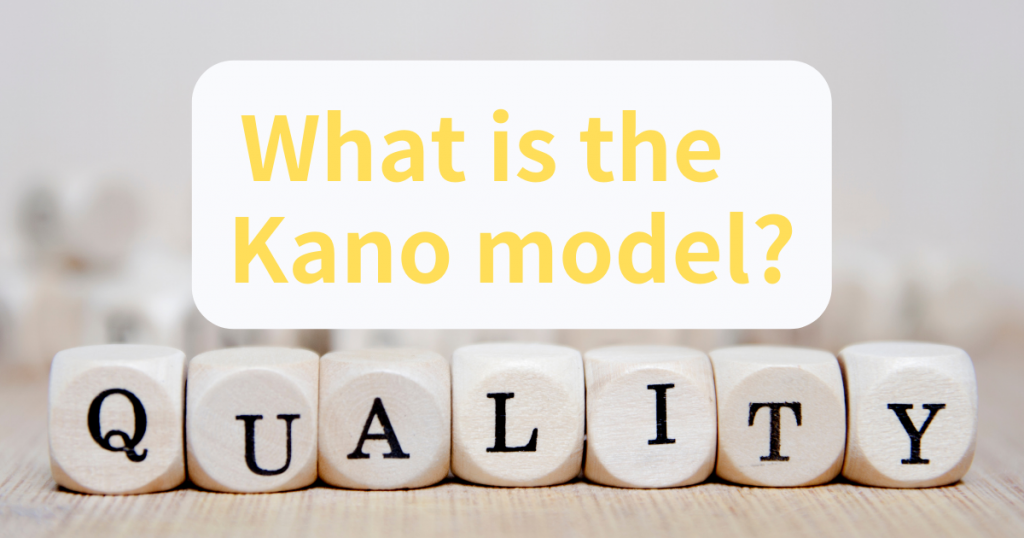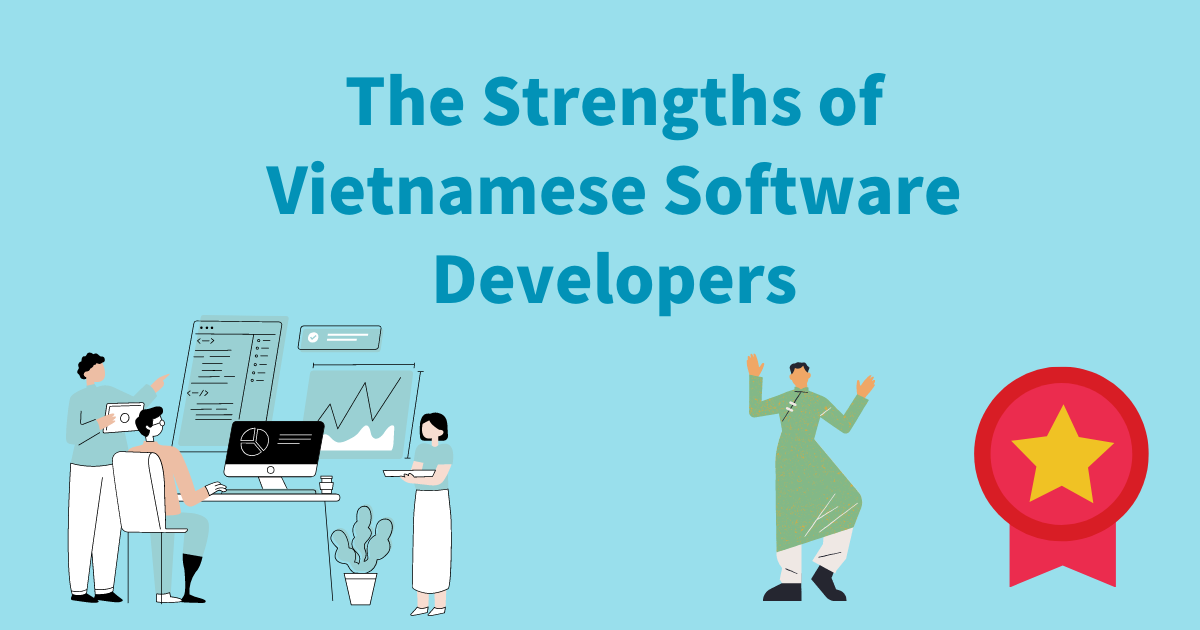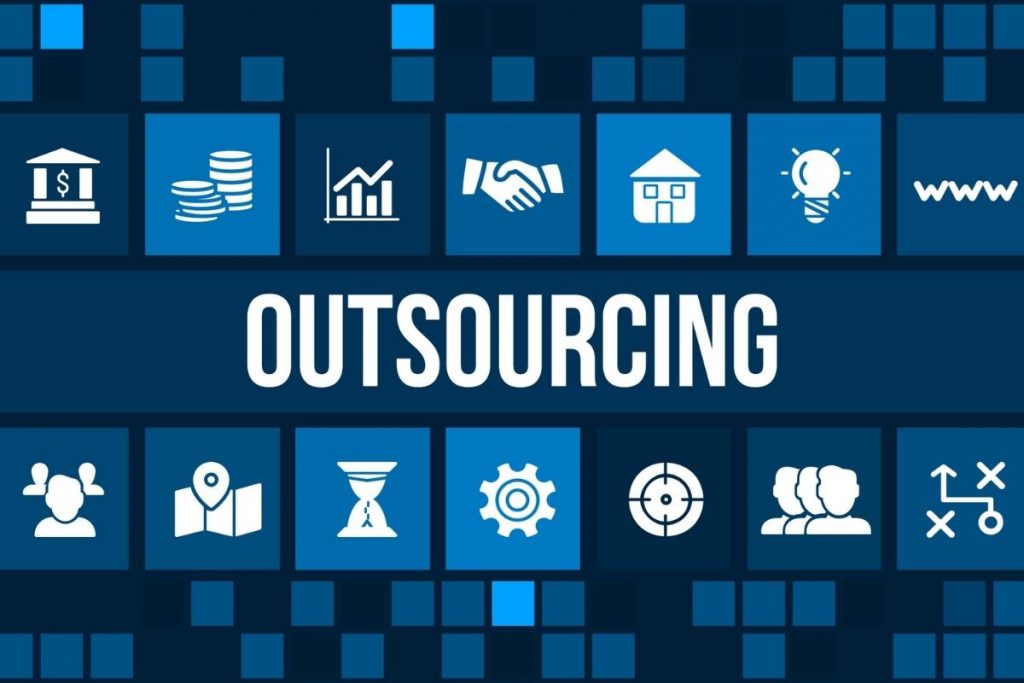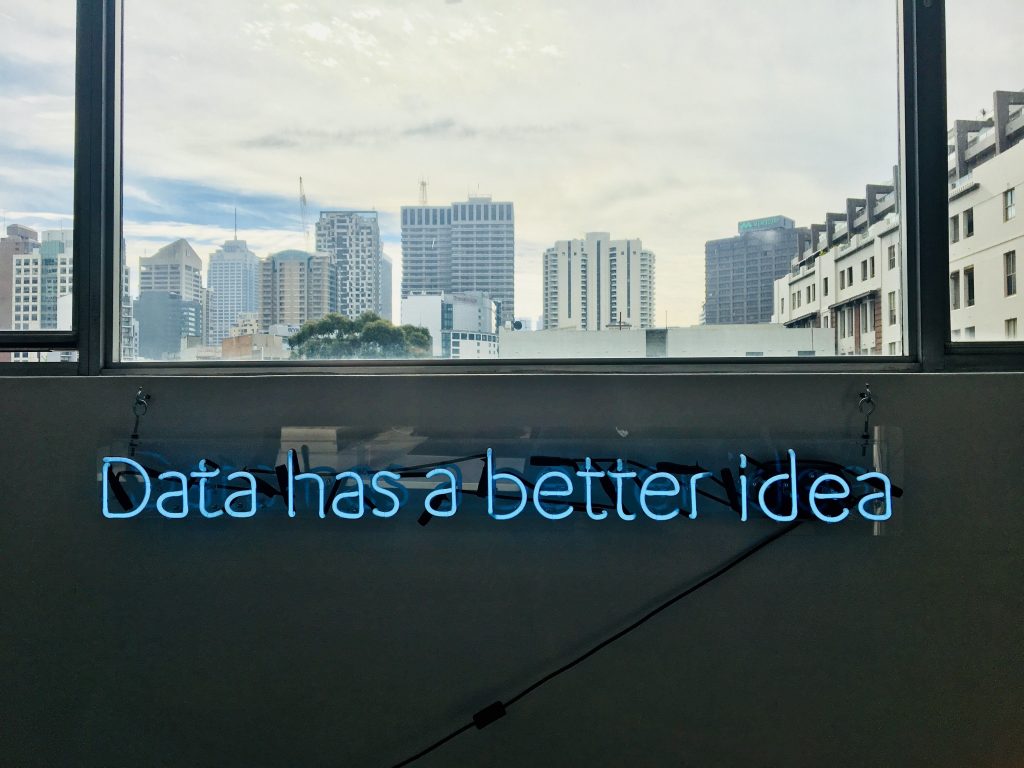In today’s fast-paced world of software development, customer satisfaction is key. However, understanding what features to build and how they will affect users is often a challenging task. Should you focus on refining existing functionality or surprise users with something innovative? The Kano Model offers a structured approach to help development teams make better decisions regarding feature prioritization based on customer needs and expectations.
Five Types of Quality that the Kano Model Defines
The quality demanded by customers is never the same, and the level of satisfaction actually felt by customers varies. The Kano Model (pronounced “Kah-no”), proposed in the 1980s by Noriaki Kano, a professor emeritus at Tokyo University of Science, is a model of the quality that customers seek. The Kano Model is a framework used in software development and product management to understand and prioritize customer needs, particularly in terms of how certain features or attributes impact customer satisfaction. This model is widely known overseas as the “Kano Model,” and it helps people understand the relationship between quality and customer satisfaction.
While it was originally developed for manufacturing, the Kano Model is highly relevant to software development. It gives teams a practical way to evaluate which features should be prioritized and how to allocate resources effectively.
The Kano Model classifies the elements of quality into the following five types.
1. Must-be Quality: A quality element that is taken for granted when it is present (satisfied) but is perceived as unsatisfactory when it is not present (unsatisfied). In the case of software development, for example, it is the quality that the software works properly as it should. However, if there is a defect in the desired functionality, it will cause dissatisfaction among users.
2. One-dimensional Quality: A quality element that is nice to have but can lead to dissatisfaction if not present. This applies, for example, to how easily users can use a product. In fact, if the software works properly and is easy to use, user satisfaction will increase. However, even if there are no problems, once the design and usability are not good, and the UX (user experience) and UI (user interface) are inferior, user dissatisfaction will surely increase.
3. Attractive Quality: A quality element that is not necessary but would be nice to have, such as the functionality that automatically translates the audio of a video in a foreign language, for example, in video streaming services such as YouTube. As long as the original quality of watching videos without stress is met, there is no problem without automatic translation. Still, it can provide a high level of satisfaction for those interested in language learning.
4. Indifferent Quality: A quality element that does not affect customer satisfaction, whether present or absent. This includes, for example, cases where the application developer changes design specifications that are not important to the user. It is important to note that such service improvements in areas far from the customer’s interest will not affect customer satisfaction and will ultimately be a waste of time and effort.
5. Reverse Quality: A quality element that reduces satisfaction when present but is better when absent. For example, let’s consider a case where an advertisement not displayed before is now displayed on a video streaming service. Even if there is a benefit for the service provider to increase the revenue from the ads, there is also a risk that it may lead to a decrease in the evaluation of the service itself for some users who think that they would be happier without advertisements.
The following chart is a graphical summary of the five quality elements of the Kano model.
For people who develop and provide new products and services, it is important to focus on three of these elements: Must-be Quality, One-dimensional Quality, and Attractive Quality, in order to improve customer satisfaction in stages.
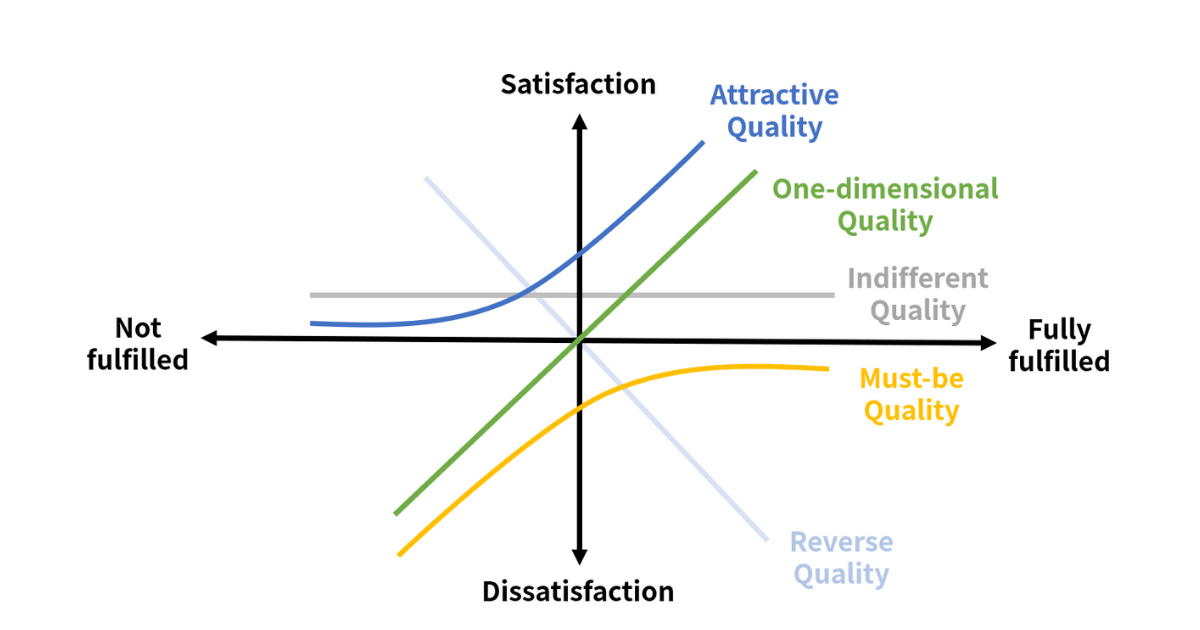
Five Types of Quality that the Kano Model Defines(SHIFT ASIA)
Steps to keep updating quality
Next, let us consider how we should proceed with our quality improvement efforts based on the Kano model.
Must-be Quality should be given top priority
In this regard, must-be quality is the one that should be ensured at the very least when developing new products and providing them to customers, which is true for product development in general, including software development. On the other hand, if we cannot guarantee the quality that our customers expect, it may lead to a loss of trust in our products as well as our reputation.
As an example, in the area of offshore development, which we at SHIFT ASIA are involved in, it is a fact that there is still a deep-rooted stereotype among some customers that “offshore development is cheaper or worse. This is, after all, because the quality of the software and systems developed by the foreign engineers of the outsourced company is evaluated as not meeting the Must-be Quality compared to the customer’s standards.
Of course, in most cases, there are a variety of problems unique to offshore development, such as lack of technological capabilities, communication, and inadequacies in project progress management, As a result, there are many cases where there is a discrepancy between the customer’s expectations and the actual deliverables. In any case, however, without ensuring Must-be Quality, it is impossible to satisfy the customer and build an ongoing relationship of trust that will lead to the next project. Therefore, in terms of priority, Must-be Quality is the quality element that should be given the highest priority.
One-dimensional Quality is easy to differentiate
Next, let’s think about One-dimensional Quality. One-dimensional Quality is often said to correspond to the functionality of a product, such as specifications and design.
For example, if a smartphone’s storage capacity doubles compared to the previous model while the price remains unchanged, most consumers will be happy. In the same way, if you can appeal to consumers with higher specifications, such as “50% better battery life,” compared to other companies’ smartphone products, it can be a great differentiator.
Taking the example of a mobile banking application, it is preferable for users if it can complete transactions with just a few taps or provide more secure and more accessible authentication rather than a complicated authentication system that requires multiple password entries, even if it can achieve the same primary objectives such as payment or money transfer.
One-dimensional Quality is the next step after achieving must-be quality, and it is a quality element that we should be aware of and focus on. However, it is difficult to say what can be improved in products and services to increase customer satisfaction within a limited budget and conditions, as it varies from industry to industry and company to company.
If we talk about the negative image of “offshore development as mentioned above, we can see that there are many ways to get rid of it, but it is not enough to achieve only Must-be Quality; it is also essential to raise customer satisfaction in the next stage, which is One-dimensional Quality.
For example, Must-be Quality is to develop a system or application that works as expected by the customer on time. On the other hand, one-dimensional Quality is an attempt to exceed the customer’s expectations by working on improvements with better functionality and design.
Attractive Quality leads to further added value
The third, Attractive Quality, is an approach that aims to add more value. In fact, in order to build a more trusted relationship with customers as a business partner, it is a big step to pursue such “I don’t mind if I don’t have it, but it would be nice to have it” quality. Taking the field of offshore development as an example, if you are recognized by your customers as “a partner who builds easy-to-use systems and applications with good UI and UX,” you will usually be regarded as a good development vendor.
In any case, if you can provide such added business value, it will be highly valued by customers as a development vendor that assures Attractive Quality. In order to achieve this, it is necessary to review the relationship with the customer so that you can propose the next improvement while being sensitive to the challenges your customers face. In other words, it is essential to build a stronger relationship with customers, not just as a development vendor, but as both a development vendor and a business partner.
Through such efforts, you can get closer to the quality that your customers really want, which also will help you achieve Attractive Quality. Nevertheless, it goes without saying that it is impossible to build a strong relationship of trust with customers if Must-be Quality and One-dimensional Quality are neglected.
Quality changes with the times
Lastly, quality changes with the times.
Especially in the modern era, people’s behavior and way of thinking are greatly affected by the continuous evolution of technology, and the world is changing at a rapid pace. In fact, there is a growing trend to demand more business value from software and systems than ever before. For example, even if an information system is developed that works well if not many people use it, it won’t be evaluated.
In other words, we are entering an era where people believe that if no one uses the system, its quality is low. Therefore, it is becoming more and more important for developers to proceed with development more speedily, keeping in mind the business impact and value creation.
In closing
In this day and age where everyone is using digital devices such as smartphones in their daily lives, the expectations for software quality are becoming higher and higher. While providing various software testing service from Vietnam, we are constantly working to improve the quality of our services so that we can change the stereotype of offshore development to a better image.
ContactContact
Stay in touch with Us
